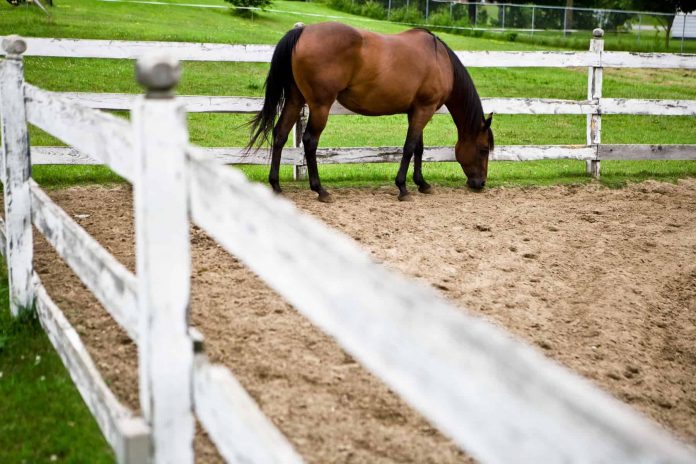As the lockdown was put in place in March, this led to equine events and competitions being cancelled or postponed across the country. In turn, many horse owners decided to reduce their horse’s workload to lighter work, as they don’t need to be as fit during these uncertain times. Therefore, horses are being turned out for longer periods of time, but it’s important that we still consider their calorie and energy intake to help protect our horses from problems such as laminitis. So, how can this be achieved whilst ensuring that they get the right amount of horse food they require?
What Is Laminitis?
Laminitis is now considered to be a symptom of an underlying health problem, including PPID (Pituitary Pars Intermedia Disease) and EMS (Equine Metabolic Syndrome). These are both associated with insulin dysregulation; when high levels of insulin circulate in the blood, it has been shown that this can cause laminitis. This has even proven to be the case without any additional starch or sugar in the diet, which is the most well known cause of laminitis.
A severe laminitis case can result in the laminae failing which allows the pedal bone to rotate downwards. In turn, this can push through the sole of the foot, causing immense pain for the horse or pony. You will tend to see most cases of laminitis in the front feet, with many horses shifting their weight back onto their heels and onto their back feet in order to relieve pressure on the front feet.
Other symptoms of laminitis include the horse being resistant to move forward, heat in the foot and a digital pulse that is pounding. A key indicator of chronic laminitis are hoof rings, as well as a separated or stretched white line.
How To Protect And Help Your Horse
Managing Weight
Although not all overweight ponies and horses will develop laminitis, research has shown that there is a positive correlation between obesity and insulin dysregulation with laminitis. By using a body condition score system and a weigh tape, you can monitor your horse or ponies’ weight. By regularly measuring their weight and body condition score you can identify changes early and alter the diet accordingly before their weight increases significantly and poses other health problems for your horse.
When managing weight it is important to ensure you aren’t over-feeding which can be done by weighing haynets to ensure you are giving the correct amount of forage for their height, weight and work done. It is also possible to limit their grass access by r using a grazing muzzle or implementing a track grazing system. With UK pasture lacking in certain essential nutrients, you need to ensure that your horse is getting the right amount of vitamins and minerals
Managing Their Starch And Sugar Intake
For most horses and ponies the biggest source of NSC (non-structural carbohydrates) is forage and grazing as it makes up at least half of most diets. Typically, bucket feed is fed in smaller quantities but it is still important to use feeds that are low in both starch and sugar. High fibre, molasses free chopped fibres are ideal for this as they provide chew time without too many calories.
Consider Their Grass Type
There are a number of factors that can influence the NSC content of grass, so it can be hard to predict the levels. These factors include the time of day, environmental conditions and the species of grass present. At night and the early hours of the morning, NSC tends to be lower as the plants have used up the sugar produced in the day. You should try to avoid turning out on a frosty, sunny day as sugar production is particularly high but it’s too cold for the grass to grow and instead the sugar is stored. The accumulation of sugar in the grass can overload the digestive system.
Feeding Hay
A later cut hay is less digestible and lower in calories making it ideal for horses on a restricted diet. If you want to know the NSC content of a bale of hay you will need to get it tested which most feed companies will do for you for a reasonable fee. If you are restricting the hay intake for your horse, feed lots of small meals, as this will reduce the time that the gut is empty. After all, horse are trickle feeders and require food little and often.
If you want to reduce the NSC content in hay, you can soak the hay. However, please note that this only removes some of the total NSC content. If you choose to soak the hay, ensure that you get a balance between reducing NSC and making sure that the hay is edible to eat.
Hopefully these top tips will help you to care for your horse during these uncertain times whilst they are out at spring grass. If you require any information about laminitis or what to feed a laminitic pony/ horse, get in touch with an equine nutritionist or vet.














